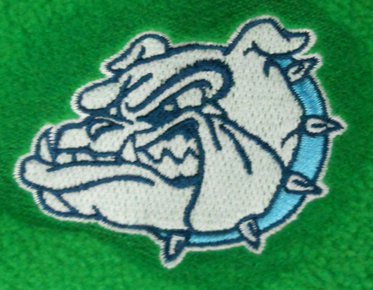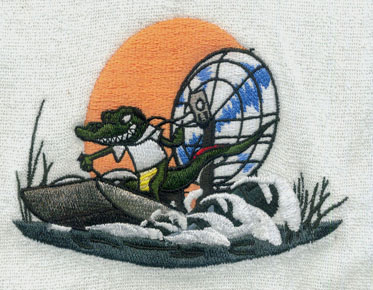From Pixels to Stitches: Converting Images into Stunning Embroidery Patches
Whether you're adorning clothing, accessories, or decorative pieces, embroidery patches allow you to transform your creative vision into tangible, tactile art. The process of converting an image into an embroidery patch may seem like a complex endeavor, but with the right techniques and tools, you can seamlessly translate pixels into stitches. In this comprehensive guide, we'll explore the fascinating journey of turning digital images into intricate embroidery patches.
Understanding the Basics of Embroidery
Embroidery is the art of embellishing fabric with decorative stitches. Traditional embroidery involves hand-sewn designs, but modern technology has introduced automated embroidery machines that allow for more intricate and precise creations. The process of converting an image into an embroidery patch involves translating the visual details of the image into stitch patterns and colors.
Choosing the Right Image
The first step in creating an embroidery patch is selecting the right image. Not all images are suitable for embroidery conversion. Opt for images with clear outlines, distinct shapes, and a limited color palette. Photographs can be challenging to convert due to their complex gradients, but simple line drawings, logos, and icons work best.
Tools and Software
To convert an image into an embroidery patch, you'll need specialized software designed for this purpose. Some popular options include:
a. Embroidery Digitizing Software: Software like Wilcom EmbroideryStudio and Hatch Embroidery offers powerful tools for converting images into stitch patterns. These programs allow you to manually adjust stitch types, density, and directions to achieve the desired embroidery effect.
b. Vector Editing Software: Before converting the image into stitches, you may need to vectorize it using software like Adobe Illustrator or CorelDRAW. Vectorization ensures clean lines and smooth edges, making it easier to translate the image into embroidery stitches.
4. The Digitization Process
Digitization is the heart of the image-to-embroidery conversion process. Here's a step-by-step overview:
a. Import the Image: Open your chosen image in the embroidery digitizing software.
b. Trace the Design: Using the software's tools, trace the outlines of the image to create a digital representation of the design.
c. Define Stitch Types: Choose the appropriate stitch types for different elements of the design. For example, you can use satin stitches for bold lines and fill stitches for larger areas.
d. Adjust Stitch Density: Fine-tune the density of the stitches to ensure optimal coverage without making the design too bulky.
e. Assign Colors: Match the colors in the image to the available embroidery thread colors. Some software tools automatically suggest thread colors based on popular embroidery thread manufacturers' catalogs.
f. Preview and Refine: Before finalizing the design, preview how the stitches will look on fabric. Make any necessary adjustments to ensure the design translates well into embroidery.
Considerations for Complex Designs
While simpler designs may be relatively straightforward to convert, more complex images require additional attention:
a. Gradients and Blending: Converting gradients from the original image into embroidery stitches can be challenging. Consider simplifying gradients or using a combination of stitch types to achieve a similar effect.
b. Small Details: Tiny details in the original image may not translate well to embroidery. Make sure to adjust the design to maintain clarity and avoid overly dense stitching.
c. Stitch Direction: Experiment with stitch directions to create texture and dimension in the embroidery. Angling stitches can add depth and visual interest to the final patch.
Testing and Sampling
Before committing to a large-scale embroidery project, it's crucial to test your design on a sample piece of fabric. This allows you to identify any issues with stitch density, thread tension, or color matching. Adjustments can be made more easily at this stage, saving you time and materials in the long run.
Choosing the Right Fabric and Thread
The choice of fabric and embroidery thread plays a significant role in the final result. Thicker fabrics may require adjustments to stitch density, while delicate fabrics may need smaller and lighter stitches. High-quality embroidery threads ensure vibrant and long-lasting colors.
Using Embroidery Machines
Once you're satisfied with the digitized design and have conducted successful test runs, it's time to use an embroidery machine. Set up the machine with the correct thread colors, stabilize the fabric using an embroidery hoop, and carefully guide the machine as it stitches your design onto the fabric.
Finishing Touches
After the embroidery is complete, carefully trim any excess threads and remove the fabric from the hoop. If necessary, you can add adhesive backing to the patch to make it easier to attach to clothing or accessories. For a more polished look, consider adding a border using a satin stitch or other decorative edge.
Showcasing Your Creations
Embroidery patches have a wide range of applications, from customizing clothing to creating unique accessories and décor items. Showcase your embroidered creations on clothing, backpacks, hats, or even frame them as pieces of art. Share your work on social media or consider selling your custom patches online to fellow embroidery enthusiasts.
Conclusion
Converting an image into an embroidery patch is a captivating journey that merges digital artistry with tactile craftsmanship. With the right tools, software, and techniques, you can transform any image into a stunning embroidered masterpiece. Whether you're a hobbyist or a seasoned embroidery enthusiast, the process of turning pixels into stitches opens up a world of creative possibilities that allow you to wear your art on your sleeve – quite literally. So, dive into the world of embroidery digitization and watch your imagination come to life, one stitch at a time.


